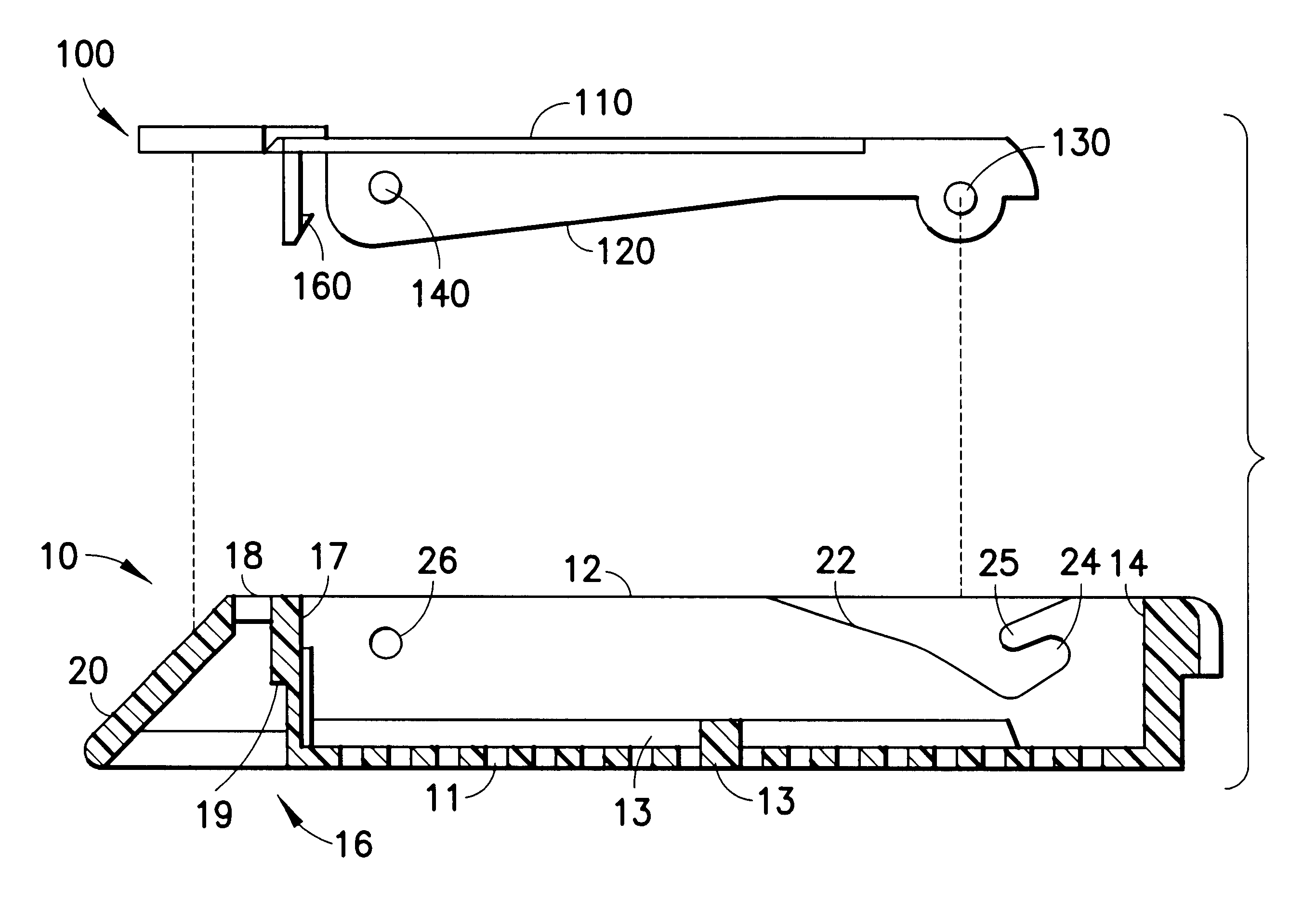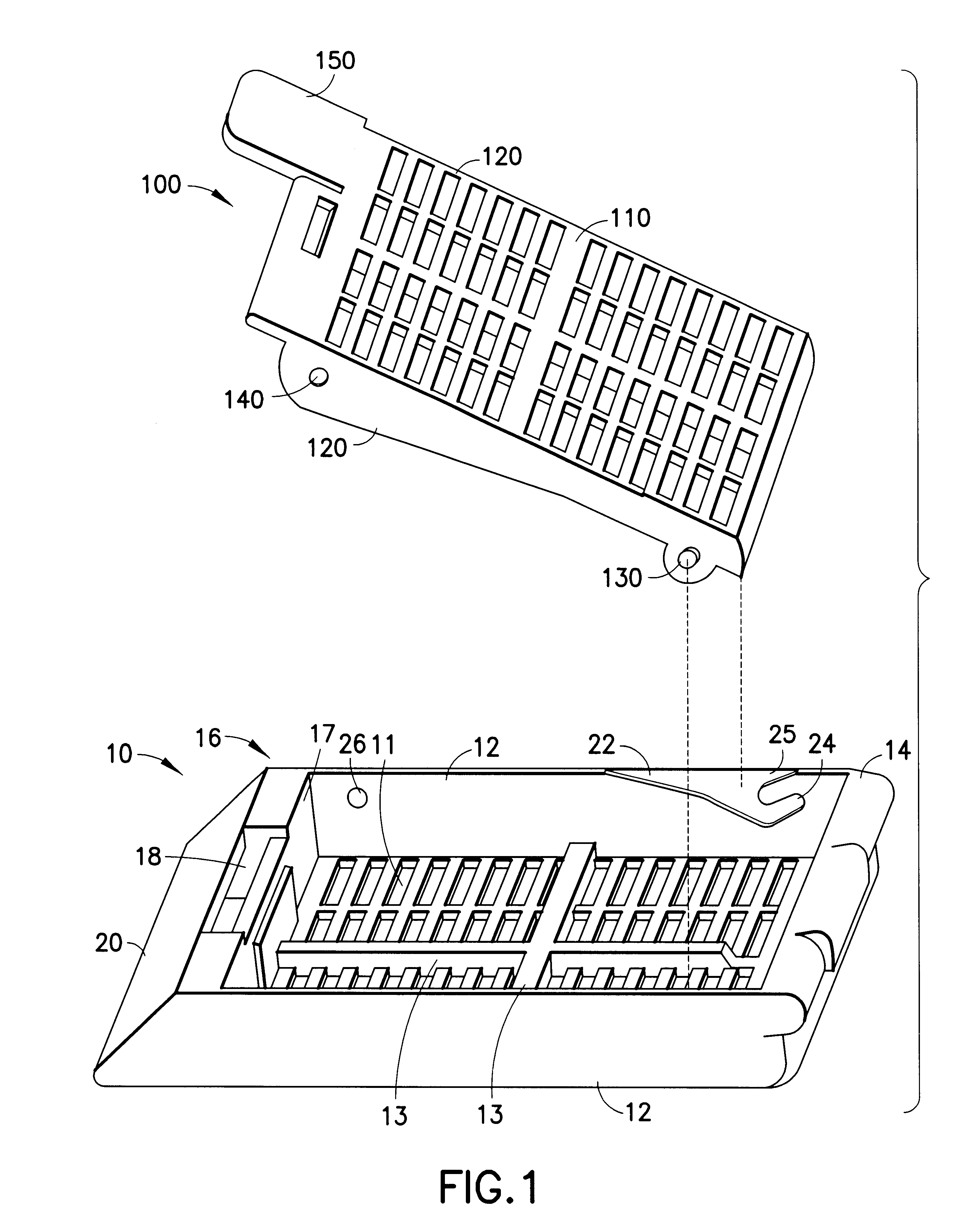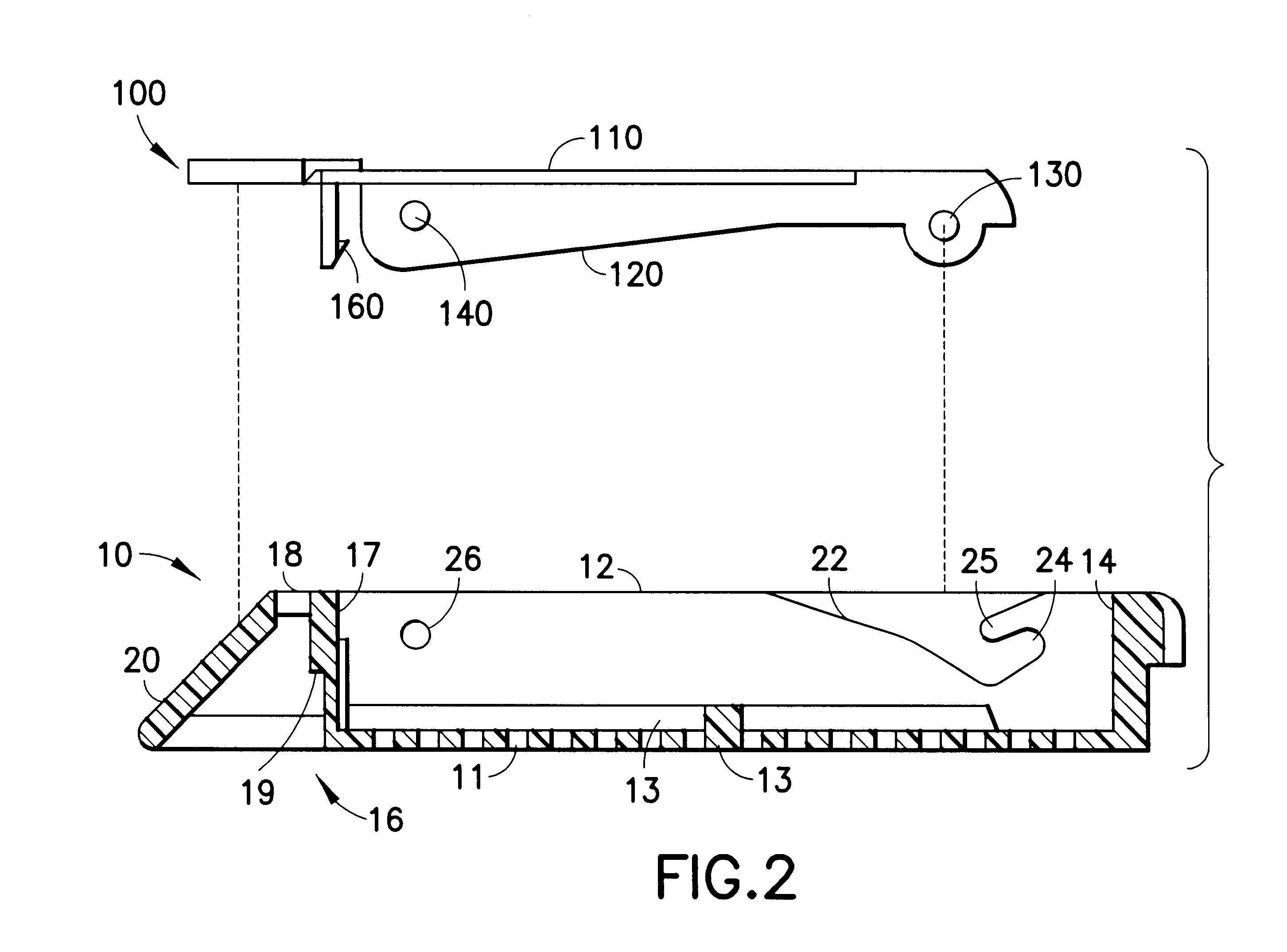Sample cassette having utility for histological processing of tissue samples
a tissue sample and cassette technology, applied in the field of container devices, can solve the problems of the tops of plastic tissue cassettes being dislodged from the base members, the cost of manufacture is high, and the disadvantages are the sam
- Summary
- Abstract
- Description
- Claims
- Application Information
AI Technical Summary
Problems solved by technology
Method used
Image
Examples
Embodiment Construction
Referring now to the drawings, FIG. 1 is a perspective exploded view of a tissue cassette according to one embodiment of the present invention, comprising base member 10 and top 100. FIG. 2 is a longitudinal sectional exploded view of the FIG. 1 tissue cassette, wherein the features are correspondingly numbered with reference to FIG. 1, for ease of reference and description.
Base member 10 is generally rectangular in shape, and comprises a compartment for the containment of tissue samples, defined by bottom surface 11, two longitudinal side walls 12, transverse back wall 14, and transverse chamber front wall 17 of front wall assembly 16. Bottom surface 11 has a plurality of apertures formed therein to effect fluid flow through bottom surface 11. To preserve structural integrity and rigidity while providing the maximum fluid flow space through the apertures, longitudinal and transverse reinforcement members 13 are formed within bottom surface 11.
Front wall assembly 16 contains chamber...
PUM
| Property | Measurement | Unit |
|---|---|---|
| angle | aaaaa | aaaaa |
| angle | aaaaa | aaaaa |
| angle | aaaaa | aaaaa |
Abstract
Description
Claims
Application Information
 Login to View More
Login to View More - R&D
- Intellectual Property
- Life Sciences
- Materials
- Tech Scout
- Unparalleled Data Quality
- Higher Quality Content
- 60% Fewer Hallucinations
Browse by: Latest US Patents, China's latest patents, Technical Efficacy Thesaurus, Application Domain, Technology Topic, Popular Technical Reports.
© 2025 PatSnap. All rights reserved.Legal|Privacy policy|Modern Slavery Act Transparency Statement|Sitemap|About US| Contact US: help@patsnap.com



